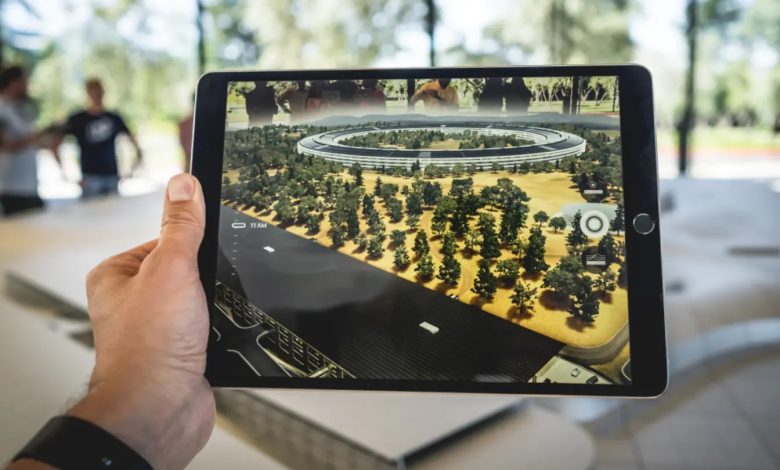Future of Mobile Apps with Augmented Reality (AR)

Augmented Reality (AR) is transforming mobile apps by blending digital elements with the real world, creating immersive and interactive experiences. From gaming to retail and healthcare, AR has opened new avenues for innovation in mobile technology.
In this article, we’ll explore the future of mobile apps with AR, current trends, key technologies, and strategies for integrating AR effectively.
1. What is Augmented Reality (AR)?
AR overlays digital information onto the real world using a smartphone camera or AR glasses. Unlike Virtual Reality (VR), which creates a fully digital environment, AR enhances reality rather than replacing it.
Common applications include:
- Interactive gaming (e.g., Pokémon Go)
- Virtual try-ons (e.g., furniture, fashion)
- Navigation (e.g., AR maps, indoor directions)
- Education and training (e.g., anatomy visualization)
2. AR Technologies in Mobile Apps
- ARKit (iOS): Apple’s AR framework for iPhone and iPad
- ARCore (Android): Google’s platform for AR experiences
- Vuforia: Cross-platform AR SDK supporting image, object, and text recognition
- Unity & Unreal Engine: Powerful engines for 3D AR apps
- WebAR: AR experiences via mobile browsers without app installation
3. AR Trends Shaping the Future
Retail and E-commerce:
- Enhanced product visualization
- Virtual try-ons for clothes, accessories, or home furniture
Education and Training:
- Virtual labs and skill training without physical equipment
- Interactive 3D models for science, medicine, and engineering
Navigation and Travel:
- Historical site guides with virtual reconstructions
- AR maps overlay directions in real time
Healthcare:
- Patient education through 3D anatomy models
- Surgical training with AR overlays
Entertainment and Social Media:
- Immersive gaming experiences
- AR filters and effects on apps like Snapchat and Instagram
4. Benefits of AR in Mobile Apps
- Enhanced user engagement: Interactive features captivate users.
- Increased conversion rates: Virtual try-ons boost sales.
- Better learning outcomes: Visual and interactive content improves understanding.
- Innovative marketing: AR experiences create memorable brand interactions.
5. Challenges of AR Implementation
- Hardware limitations: Older devices may not support AR features.
- Battery consumption: AR apps require high processing power and sensors.
- Complex development: Requires 3D modeling, tracking, and optimization skills.
- Data privacy: AR often uses cameras and location data, raising security concerns.
6. Best Practices for AR App Development
- Optimize for performance: Reduce CPU and GPU load; use efficient 3D assets.
- Ensure device compatibility: Support a wide range of smartphones and tablets.
- Prioritize UX design: Intuitive interfaces and simple AR interactions improve adoption.
- Use cloud anchors and AR cloud: Enable persistent AR experiences across devices.
- Test in real-world environments: Lighting, surfaces, and user movements affect AR performance.
7. AR in Cross-Platform Apps
- Use frameworks like Unity, Unreal, or Vuforia to develop AR apps for both iOS and Android.
- Leverage AR Foundation (Unity) for shared AR experiences across platforms.
- Consider WebAR for lighter experiences without installation.
8. Monetization Opportunities with AR
- In-app purchases for AR features or items
- AR ads and branded experiences
- Virtual try-ons that drive e-commerce sales
- Premium subscription models for AR content access
9. Future Outlook
- AR glasses and wearable devices will extend mobile AR beyond smartphones.
- 5G networks will allow real-time AR streaming with lower latency.
- AI-powered AR will provide smarter object recognition and predictive experiences.
- AR will become a standard feature across industries, from healthcare to entertainment.
10. Conclusion
The future of mobile apps is intertwined with Augmented Reality, offering immersive, interactive, and practical experiences. Developers who embrace AR now can create innovative apps that engage users, improve learning, and drive business growth.
AR is no longer a niche technology—it is becoming essential for the next generation of mobile applications.

